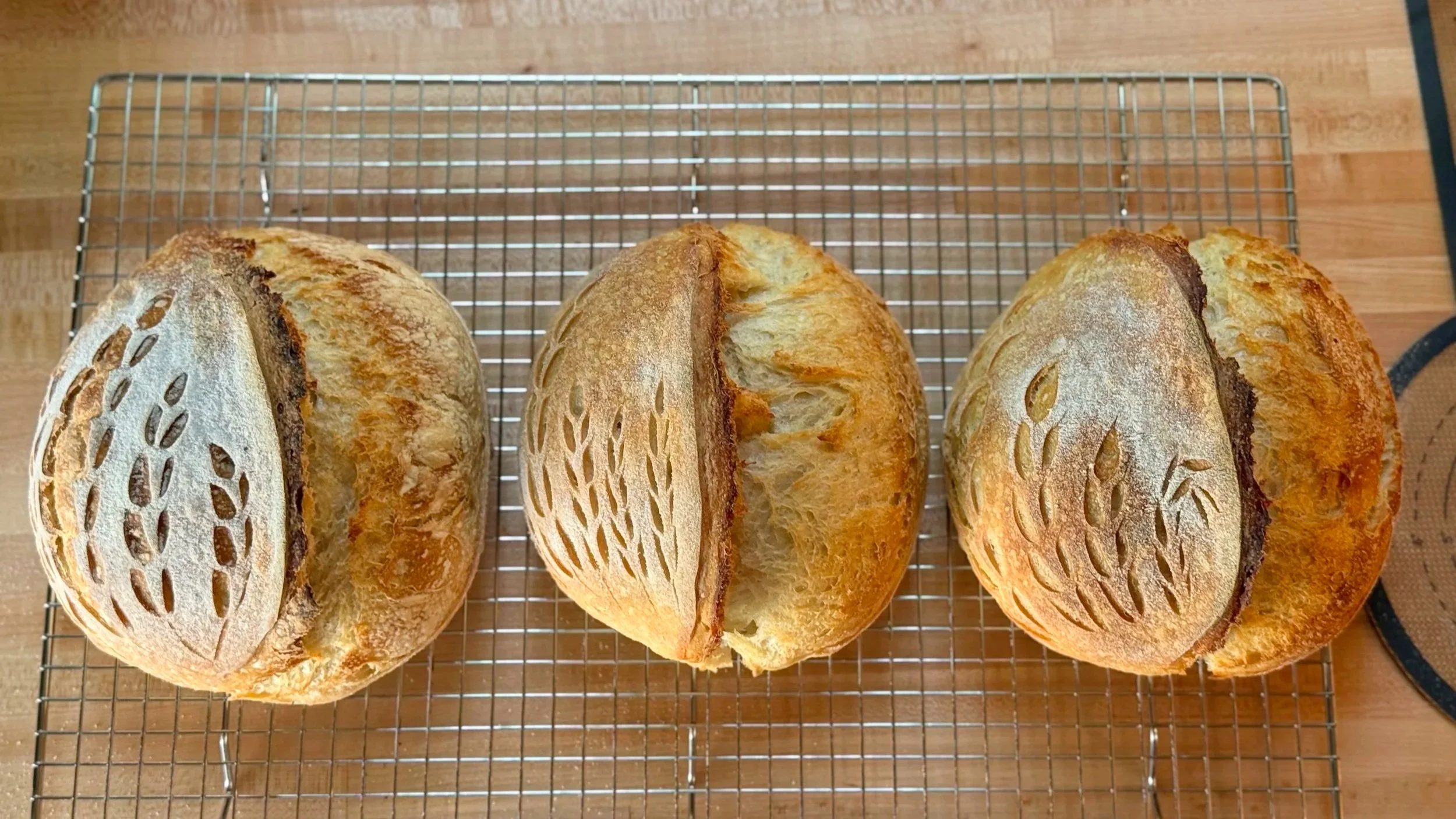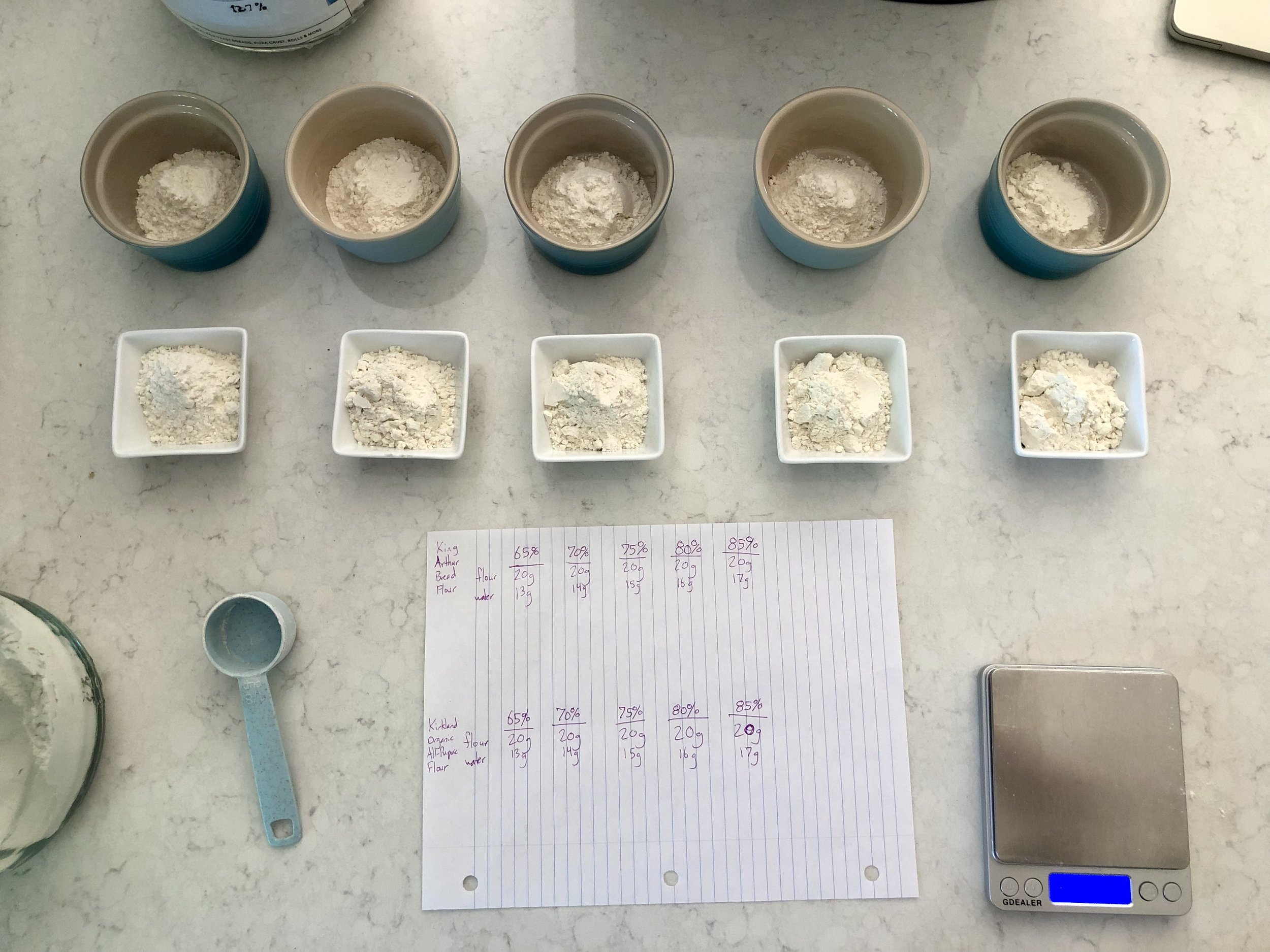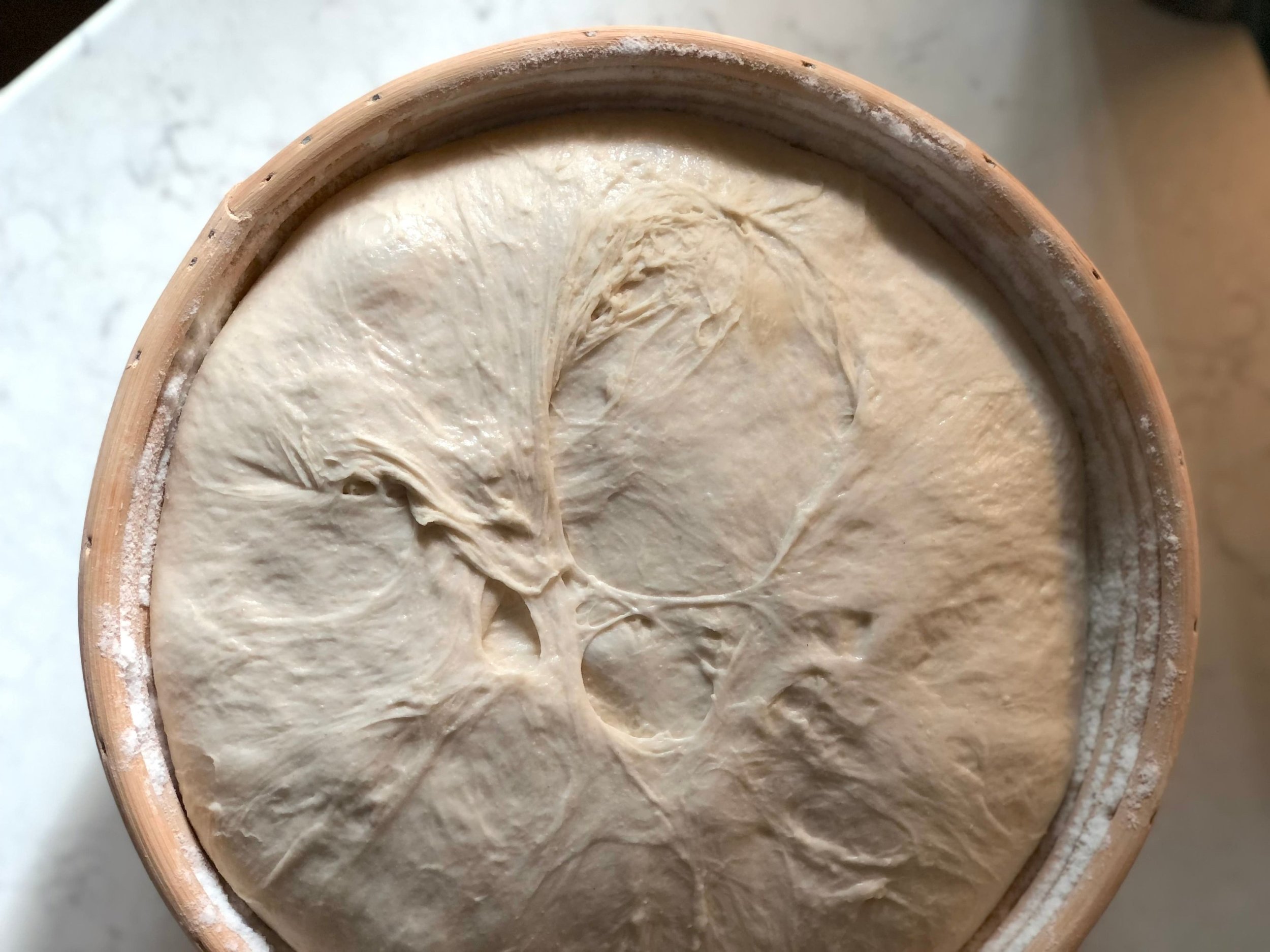Cold Retard: Does It Matter How the Dough Is Covered?
/This post may contain affiliate links. If you make a purchase using these links, Jennyblogs may receive a small commission, at no extra cost to you. This helps to support Jennyblogs. Where possible, links are prioritized to small businesses and ethically and responsibly made items. For further information see the privacy policy. Grazie!
When it comes to the retard, or overnight slow ferment in the fridge for sourdough, you might be wondering what to put your loaves in and how to cover them.
The best practice is to put them in banneton baskets or other similar proofing baskets, but other bowls or such can be used in a pinch, as long as the dough can easily be gotten out the next morning for baking. The dough is in its final shape at this point and shouldn’t have to be pried from a container or it will lose its shape. If you have some clean linen cloths, you can line your bannetons or bowls with those.
Now what to cover them with? Plastic? That is the first guess, since you usually want food well covered to retain freshness, flavor, and moisture.
Perhaps you’ve seen some of the sourdough bakers around covering their bannetons with cloths, rather than plastic. Is there anything to it? Wouldn’t your dough dry out if you cover it with just a cloth?
Covering dough with plastic
Many, maybe even most bakers I know cover their dough for the retard with plastic. Whether it’s a large ziploc bag, a grocery bag, a shower cap, or a plastic cover made specifically for covering bread dough, there are many different ways to effectively cover your dough with plastic.
You’ll want to keep the plastic from touching the dough to avoid it sticking, but other than that use what plastic you wish. I would stick with food grade plastic since it is in such close proximity to food and runs the risk of coming in direct contact with food. For this reason I’m a little leery of shower caps since they’re made of cheap and sketchy plastic, although the ones I’ve linked are supposed to be food grade. I would also double check grocery store bags to see if they are indeed food grade.
Plastic will keep your dough moister and stickier as it keeps in all the moisture. Depending on your dough hydration level and inclusions added, this may be beneficial or detrimental to your bread.
Another important thing to keep in mind is that plastic keeps in heat better, so if your dough is very warm or is verging on over proofed, avoid using plastic so the dough can cool down quicker in the fridge. I’ve seen an instance where a baker was bulk fermenting her dough very well, but during the cold retard her loaves were still managing to over ferment. It came to her attention that her loaves were over fermenting because she was covering them with plastic in the fridge! Once she switched to a different covering, her loaves were fine.
Covering dough with cloth
Whether or not you line your bannetons with cloth, you can also choose to cover your dough with cloth. You can use an elastic linen covering, or if you line baskets with a larger square cloth, just fold it over your dough to cover.
That last option is what I do. I might be in the minority, but I find it preferable. It’s not plastic, it uses just one cloth for lining and covering the dough, and it keeps my bannetons clean all at the same time. I also don’t have to worry about retained heat and possible over-proofing. Does my dough dry out? It forms a light skin, but it doesn’t seem to affect the bake or oven spring at all. Sometimes the cloth can leave some imprints in the top of the dough as it slowly rises in the fridge, if anything is pressing down on it. As you can see in the photos below, the cloth helped to smooth out the dough where the plastic-covered dough retained signs of shaping and “clasping” more.
A big part of the success of the cloth covering will be what type of air circulation your fridge has. If the air circulation includes fans and rapid moving air, you may find your loaves dry out excessively, too much for using just cloth. I’ve seen others perform a similar experiment where their loaf that was covered in cloth turned quite stunted compared to the loaf covered in plastic.
A Side-by-Side Experiment
My fridge doesn’t seem to dry out my loaves much. I baked two loaves side-by-side, one having done its retard in plastic and the other in linen. The results were basically the same. If anything, the cloth covered loaf did a touch better, but see for yourself in the photos.
Both loaves are identical in recipe and method. The inclusions are green olives and feta. Both were shaped with the tri-fold caddy clasp method.
dough covered in linen, after 12+ hour retard
dough covered in plastic, after 12+ hour retard
plastic covered loaf on the L, linen-covered on the R
crumb of the plastic-covered loaf
crumb of the linen-covered loaf
So much of baking sourdough comes down to your own environment. As usual, I would encourage you to experiment yourself. Either try a different way of covering than you normally do to see the results, or do it side-by-side as shown in this post.































